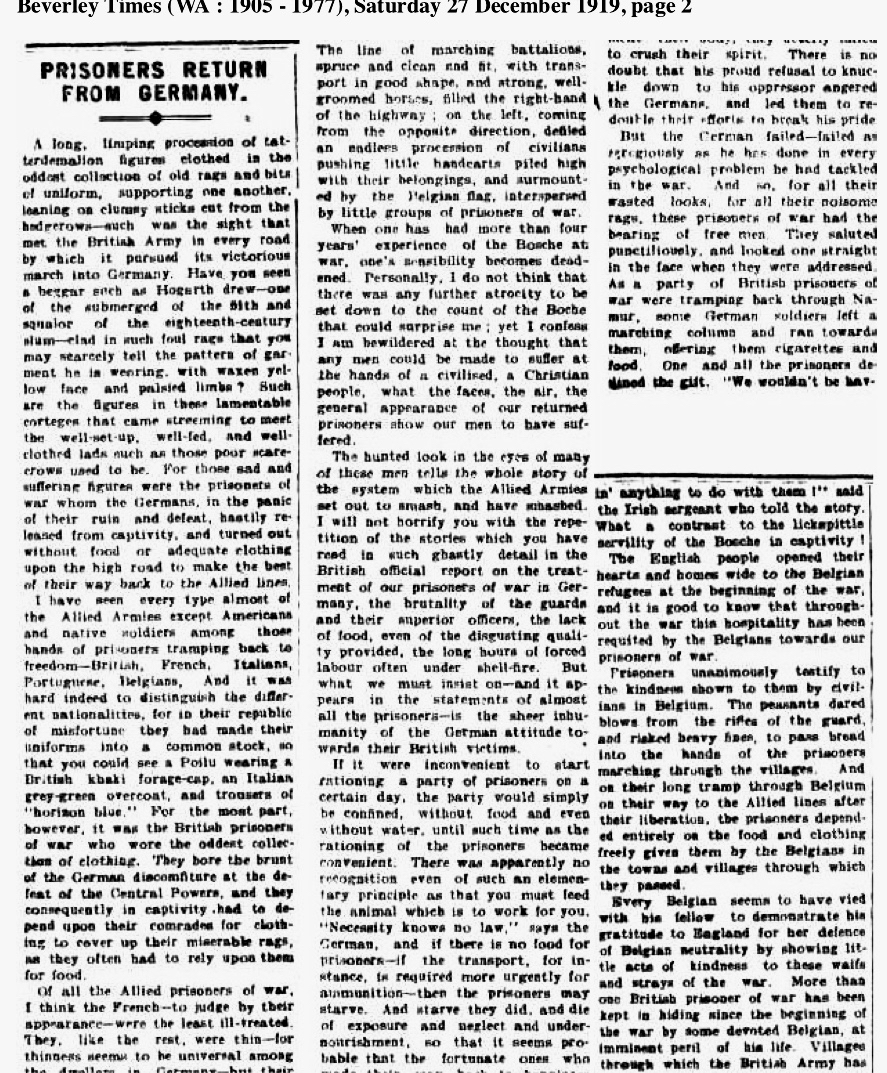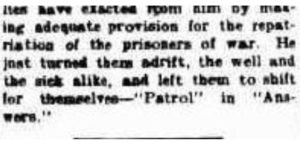Almost 4,000 Australians were captured WW1 on the Western Front in France and Belgium between 1916 and 1918.
4,000 POWs were few compared to nearly 60,000 killed and 150,000 wounded.
Australian WW1 POWs remained overlooked for generations. They did not ‘fit’ the myth of the Australian ‘Digger’ and in particular the ‘Anzac Hero’ created by Charles Bean or others.
Nor did the injured and shell-shocked Australians who returned home to Military Hospitals and for decades, filled the ‘Old Men’s Homes’ we can recall in every country town and every suburb. They never returned to their pre-war lives, homes and families.
Please take time to watch this Youtube documentary prepared by DVA
Do you find some of the comments strangely glossy about the life of POWs??
Several 2/4th soldiers had fathers who became POWs in WW1 or in the case of Findlay
WX8874 FINDLAY, ALEXANDER WILLIAM (Alec or Sandy) 2/4th Machine Gun Battalion 8th Division, AIF WW2 – died illness 1944 Thailand having worked on Burma-Thai Railway.
Scottish born Findlay, an orchardist from Kalamunda was father of two children when he enlisted AIF 1940.
What went through Sandy’s mind when on 15 Feb 1942 WW2, as a soldier fighting in AIF Singapore he became a POW of Japan??
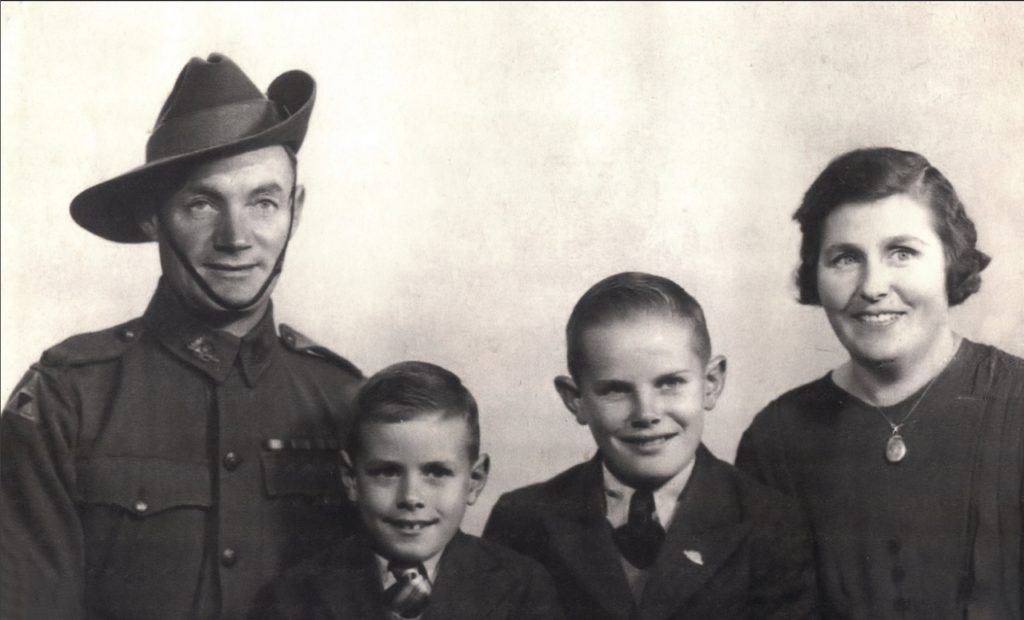
‘Alex served with the Gordon Highland Regiment in Scotland during the First World War. He was one of many young men who lied about their age so they could join the forces at the age of 17. He never talked about the war from which he returned with shrapnel wounds. He was held prisoner in a Prisoner Of War (POW) camp until his release at the conclusion of the war.‘
Alex Findlay was with Company B of the 5th Battalion Gordon Highlanders, captured at Fresnoy 21st of March 1918. His service number was 265300. The record from Giessen POW camp near Hamburg shows “granatspl arm und bein” which we believe indicates grenade splinters in his arm and leg.
On the positive side of life, Findlay was captured late in the war and although we have no knowledge of when he was released, we can estimate it would have been no later than the 1919 Armistice. Certainly Germany was in no position to feed and keep POWs, the general population was starving, and had been for some time.
Please further read the story of Alec Findlay
WX10791 Beattie Alan Robert (known as ‘Joe)
His\ 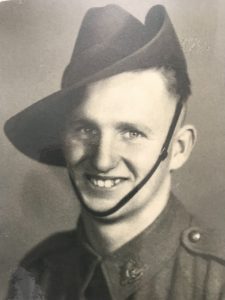 father ROBERT MURDIE BEATTIE enlisted 1914 with 11th Battalion. He was captured at Lagnicourt 15 Apr 1917. He had received GSW to his left arm and left side. These wounds were treated by the Germans. As an Officer his POW conditions were far superior to those of his men. They received Red Cross parcels quite soon after capture. They did not work – Australians captured at Bullecourt worked as POWs at the German Front Line France in quite dangerous circumstances and subjected to Allied bombing prior being moved to Germany. Their wounds were not treated for months and it is recorded as long as six months. There were Australian POWs who died of GSW in German Camps.
father ROBERT MURDIE BEATTIE enlisted 1914 with 11th Battalion. He was captured at Lagnicourt 15 Apr 1917. He had received GSW to his left arm and left side. These wounds were treated by the Germans. As an Officer his POW conditions were far superior to those of his men. They received Red Cross parcels quite soon after capture. They did not work – Australians captured at Bullecourt worked as POWs at the German Front Line France in quite dangerous circumstances and subjected to Allied bombing prior being moved to Germany. Their wounds were not treated for months and it is recorded as long as six months. There were Australian POWs who died of GSW in German Camps.
What happened to the Bullecourt prisoners?
Below is copied some information from Lt. Beattie’s WW1 personal records. (Interesting was the fact initially it was recorded the possibility Beattie had deserted – until it was officially verified he was a POW of Germany. Of course there large numbers of Allied soldiers who deserted – who can blame them? If you were French, English or Canadian and caught – punishment was to be Shot at Dawn.
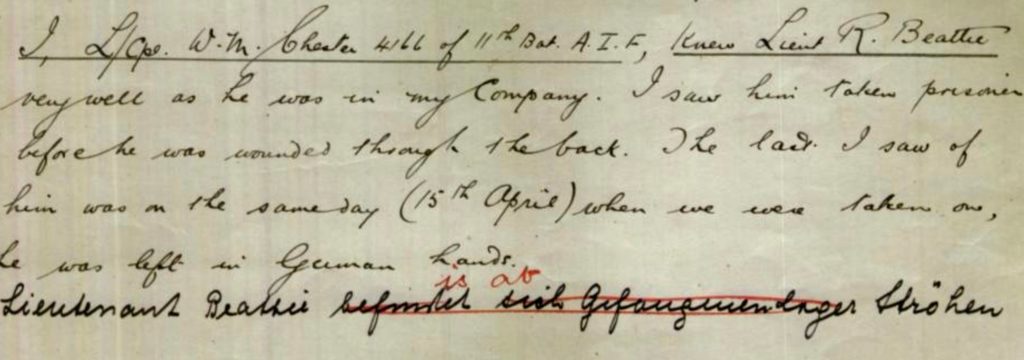
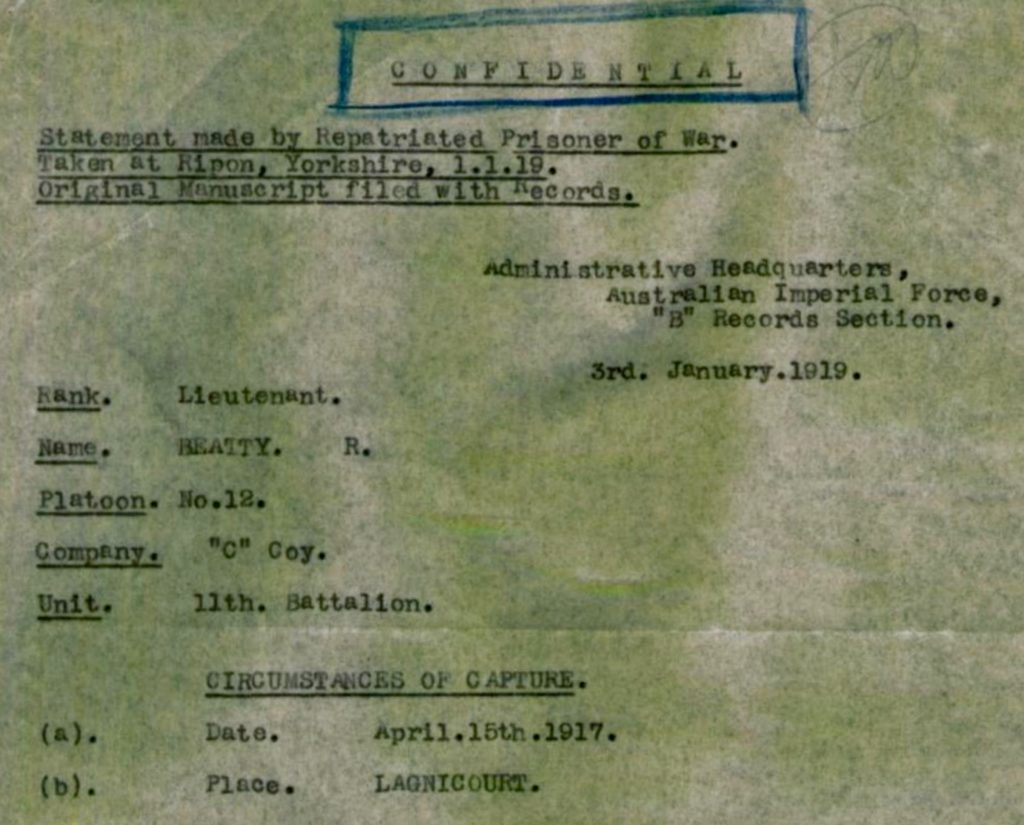
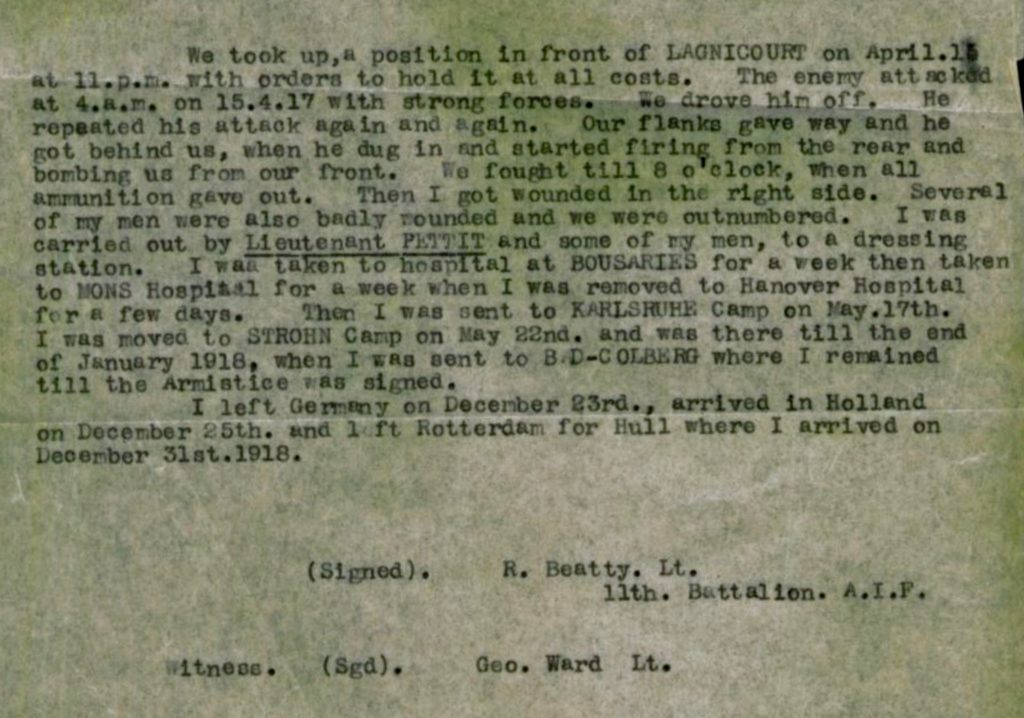
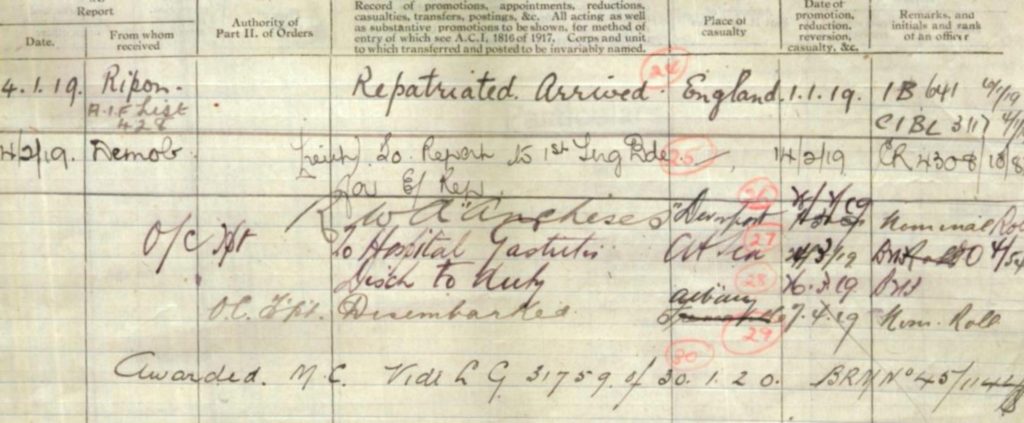

Robert Beattie’s name is included on the below list of Repatriated Australian soldiers 1919.
____________________
WX13553 Syd Spous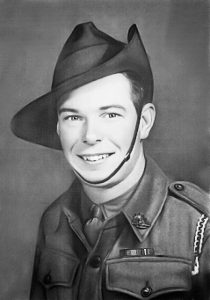 e.
e.
Died Tarsau, Thailand of heart failure aged 22 years. Syd’s father Stanley Garfield Spouse, enlisted 1915 fought Gallipoli and France, was captured Bullecourt 1917 was a POW of Germany for 18 months. His name is included on third page of Repatriated Prisoners, 1919. He was repatriated from Gustrow but would have initially been sent to Lille for some months to work for the Germans at their front lines.
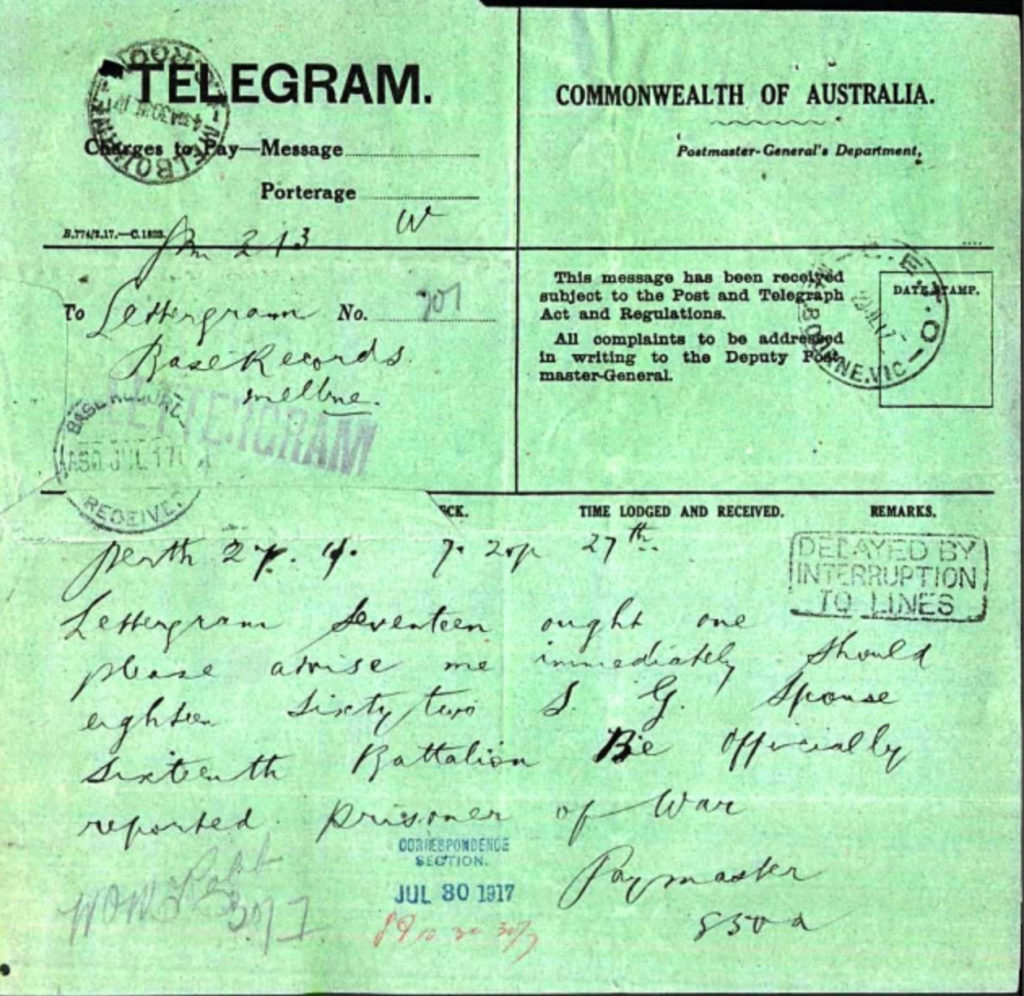
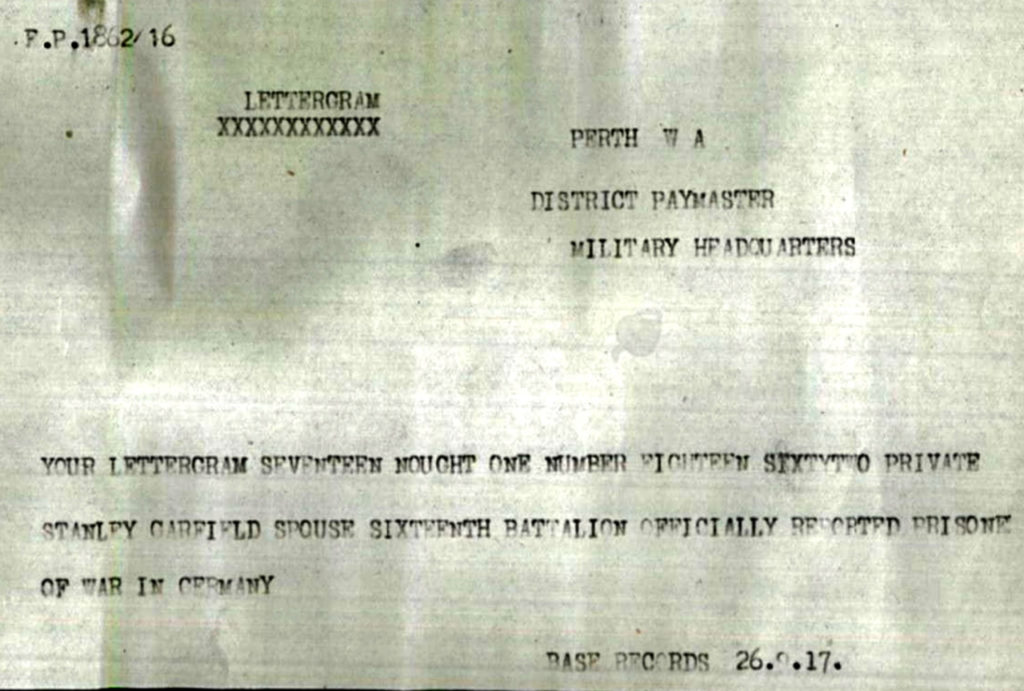
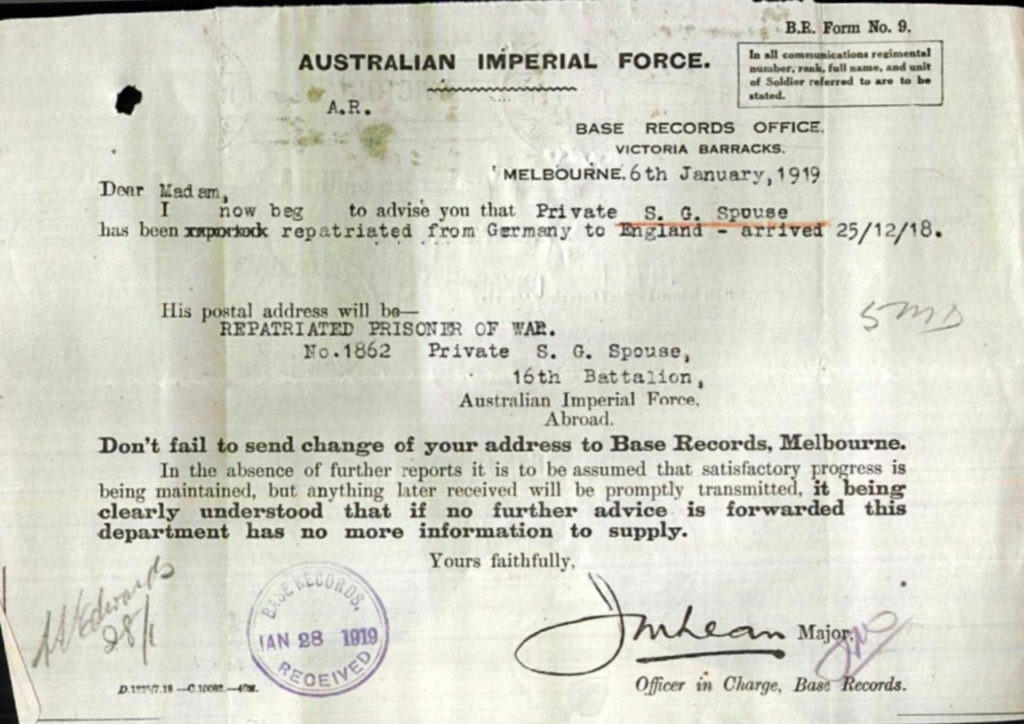
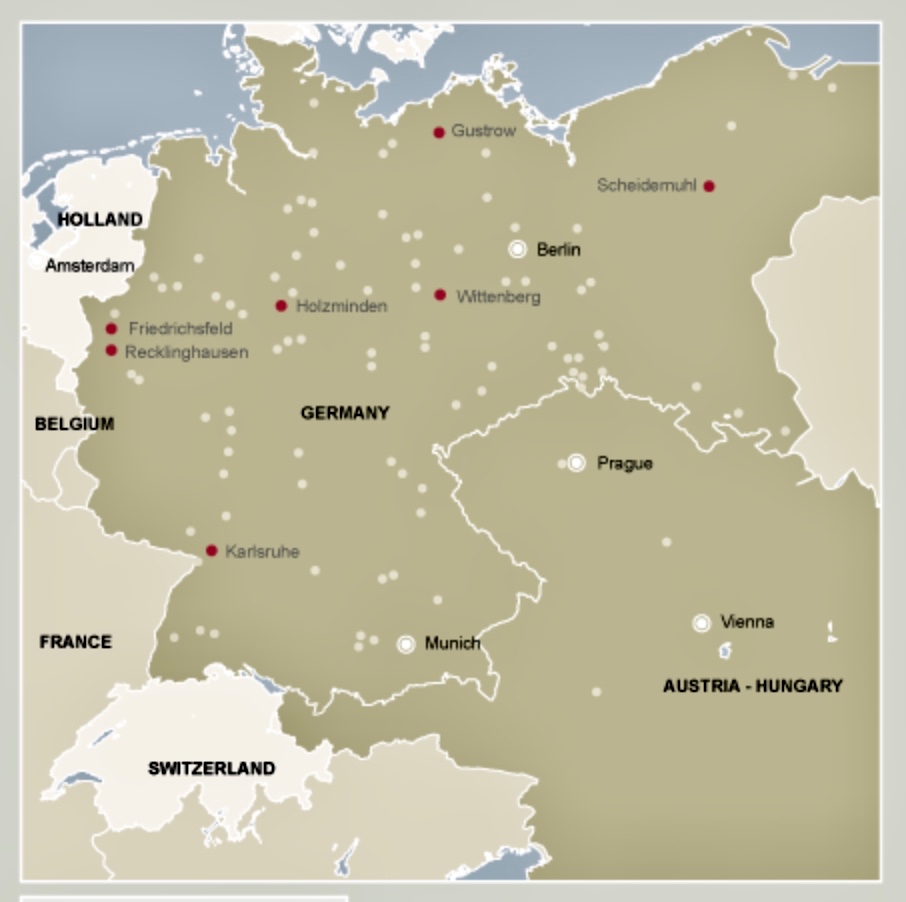
Of the 372 Australians who died in captivity – 288 died from wounds received during action. It would take up to 6 months for wounds to heal – POWs quite often did not receive medical treatment, and if they did it certainly was not immediately.
Conditions for POWs varied from Camp to Camp. Those in Germany were better but the men suffered from increasing food shortages cause by British Blockade. Our POWs in Germany survived because of regular Red Cross parcels.
Most prisoners were initially kept in France. Those 1170 Australians captured at Bullecourt 1917 were kept at Fort MacDonald, near Lille in Belgium. They were treated brutally, kept starved and worked worked for months under shellfire close behind German lines.
“The Germans … put us in a fort at Lille. They never gave us anything. We may have had a slice of bread a day, nothing else. We were building dugouts, huts, carrying and loading shells. We had one slice of bread in the morning and at lunchtime a pot of soup, which was more or less like water.”
Private Horace Ganson, 16th Battalion, AIF, captured at Bullecourt from AWM.
Not all Bullecourt prisoners fared poorly. The officers were separated from their men and sent to Germany, entering a vast prison system which by November 1918, comprised 165 camps and 2.5 million allied prisoners.
____________________
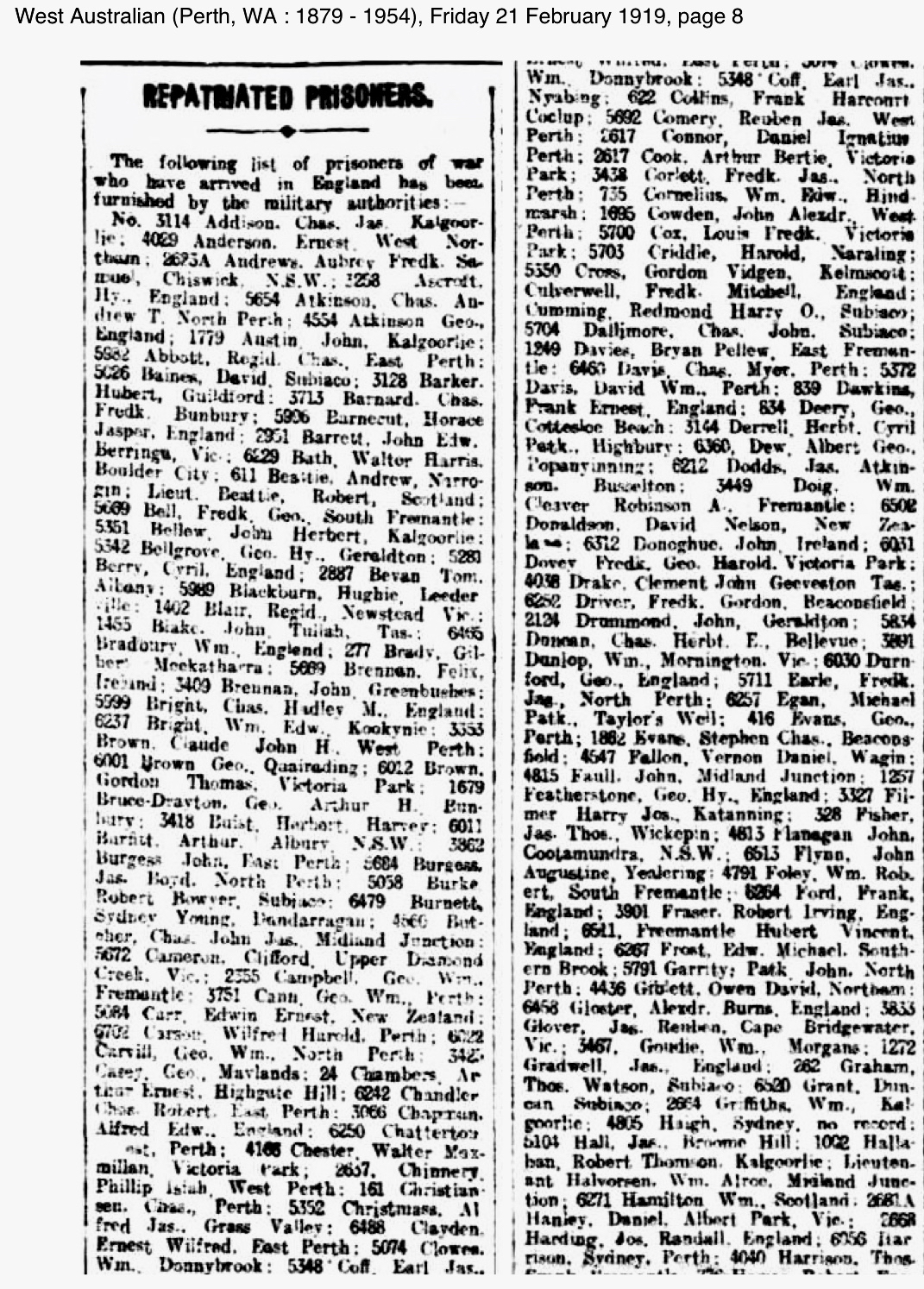
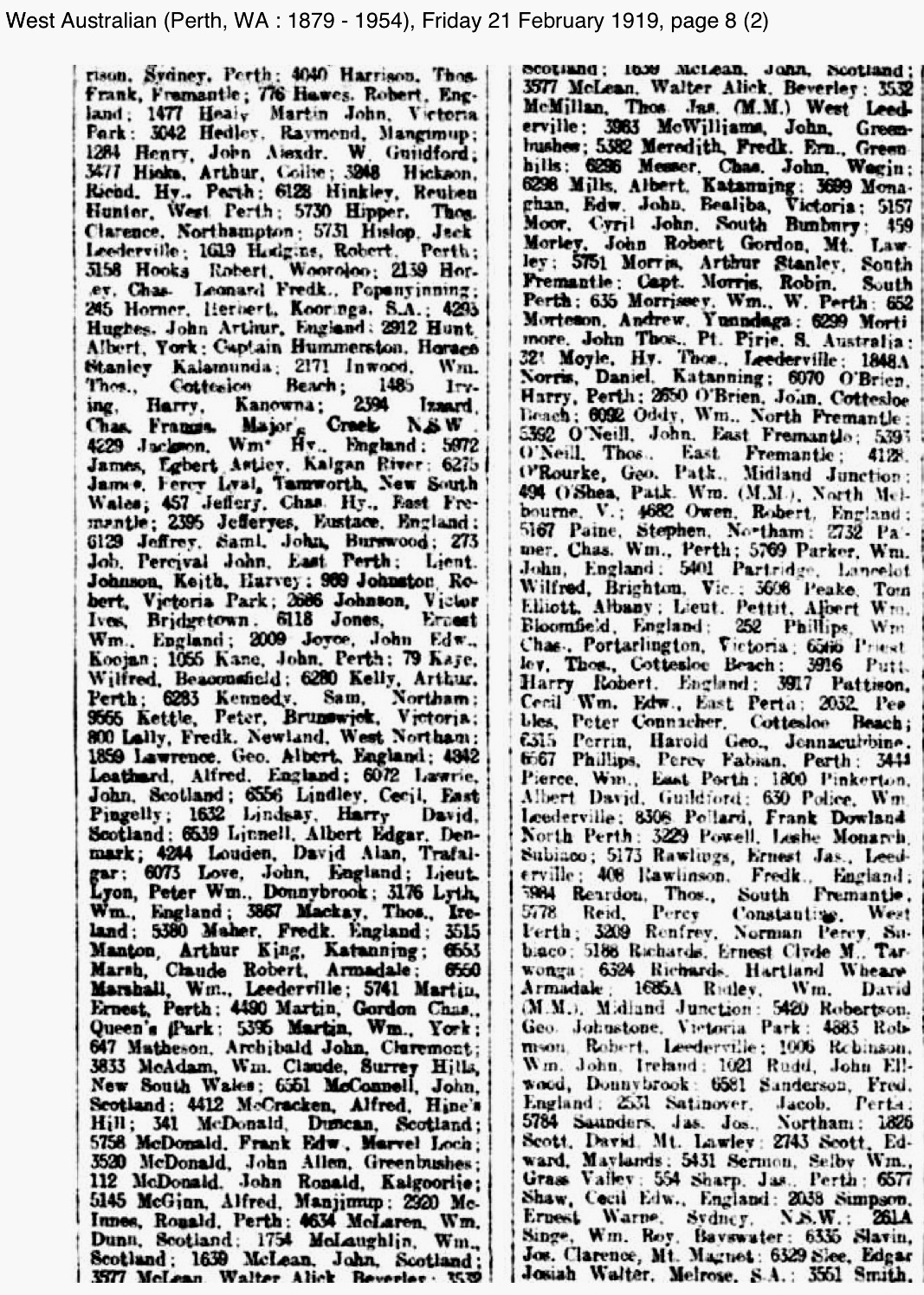
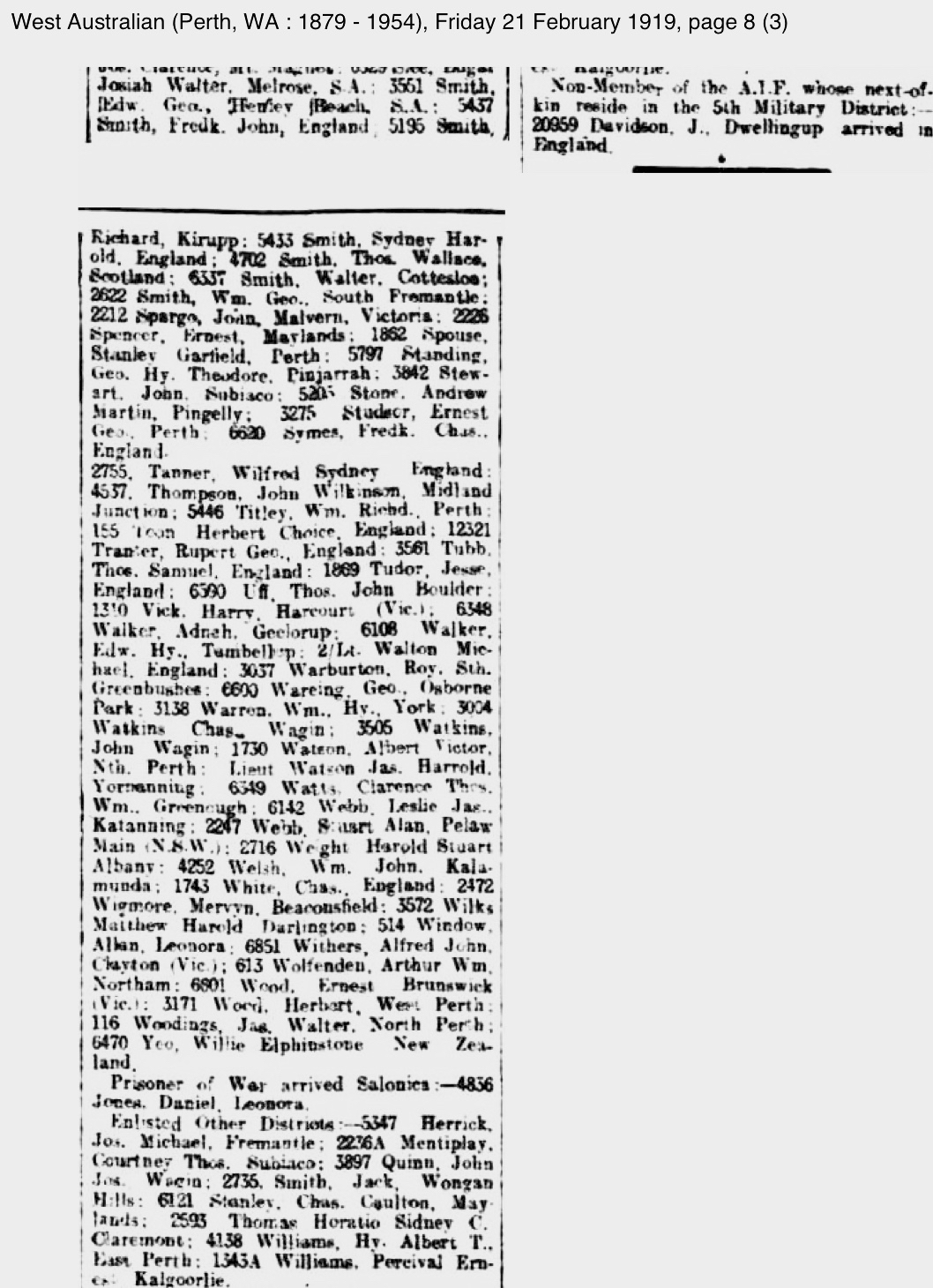
‘The Hague Convention recognised officers as members of the upper class. This protected them from working as manual labourers to support their captor’s economy. Officers were transported to camps within days of capture, and the Australian Red Cross Society in London was notified of their whereabouts soon after.
Prisoners of other ranks lived a life in captivity that was defined by their ability to work. The Hague Convention allowed captors to use the labour of other ranks prisoners if the work was not connected to military operations’ – from AWM.
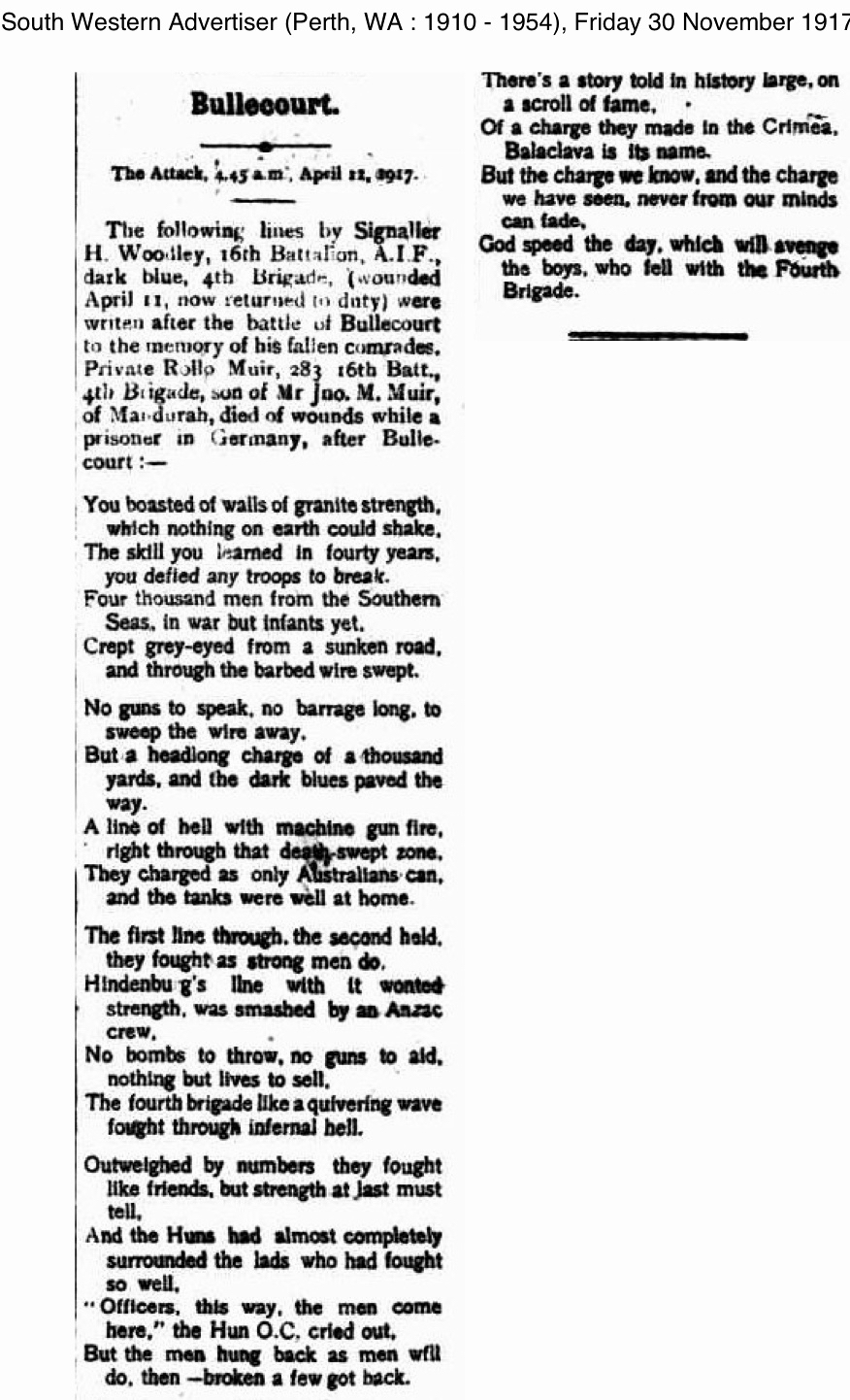
This is an interesting thesis and research prepared in Australia about WW1 POWs
‘NEGLECTED AUSTRALIANS: PRISONERS OF WAR FROM THE WESTERN FRONT, 1916 TO 1918 P.M. Regan’
There has been extensive research in the last few decades than ever before, about WW1 and WW2 Australian POWs.
Coping With Captivity: Australian POWs of the Turks and the Impact of Imprisonment During the First World War
by Kate Alexandra Ariotti BSc/BA (Honours I)
_________________
WX9231 HODGSON, Leonard Sydney ‘Tim’
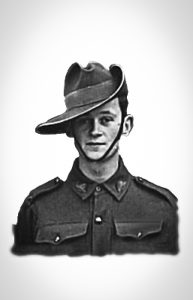
Born 1919 in London England to John Henry & Minna Bertha Hodgson, ‘Tim’ had 2 older brothers Thomas John & Charles Henry. In 1924 the Hodgson family migrated to Western Australia from England and took up dairy farming at Carmarthen, Denmark, part of the Government’s group settlement schemes. The boys were then aged 16, 15 and 5 years. Tim would have attended the local one teacher school and the older boys would initially have worked on the family farm.
Establishing a dairy farm on virgin land at Denmark in the 20’s, 30’s and 40’s proved to be very challenging, many farms failed the “owners” walking away.
Hodgson enlisted AIF 30 Oct 1940 and later joined 2/4th’s ‘A’ Company No. 6 Platoon as a Rangetaker.
Hodgson went to the Burma end of Burma-Thai Railway to work with ‘A’ Force Burma, Green Force No. 3 Battalion. 3,000 Australian POWs were the first work party to leave Singapore.
Tim died at Khonkan 55km Hospital Camp Burma 24 Sep 1943 following the second amputation of an ulcerated lower leg. He was 24 years of age.
Read the story of Pte. Tim Hodgson WX9231
Tim parents were living in Germany when war broke out in 1914, his mother Minna was German born. Minna managed to leave Germany with the Hodgson’s 2 sons. She remained in England throughout the war. John Hodgson was imprisoned at Ruhleben POW Camp near Berlin throughout the war. This camp was for civilians only.
Please read about Ruhleben POW Camp WW1 (Detailed diary of a fellow POW’s 19 months incarceration)
‘Ruhleben Prison Camp near Berlin was a civilian detention camp during the First World War. The former horse racecourse housed in the region of 4,000 to 5,000 predominantly British prisoners, who were generally citizens living, working or on holiday in Germany at the outbreak of war. The detainees also included the crews and passengers of a number of civilian ships stranded in German harbours or captured at sea. The German authorities adhered to the Geneva Convention, resulting in the camp detainees administering their own internal affairs, which included the creation of a postal service that eventually ceased after being declared illegal. The prisoners organised their own artistic, cultural and sporting entertainment. The latter included the formation of a Ruhleben Football Association that organised league and cup competitions. The camp held several former international footballers, including former England international Steve Bloomer, who featured in these competitions.’ – information from IWM.
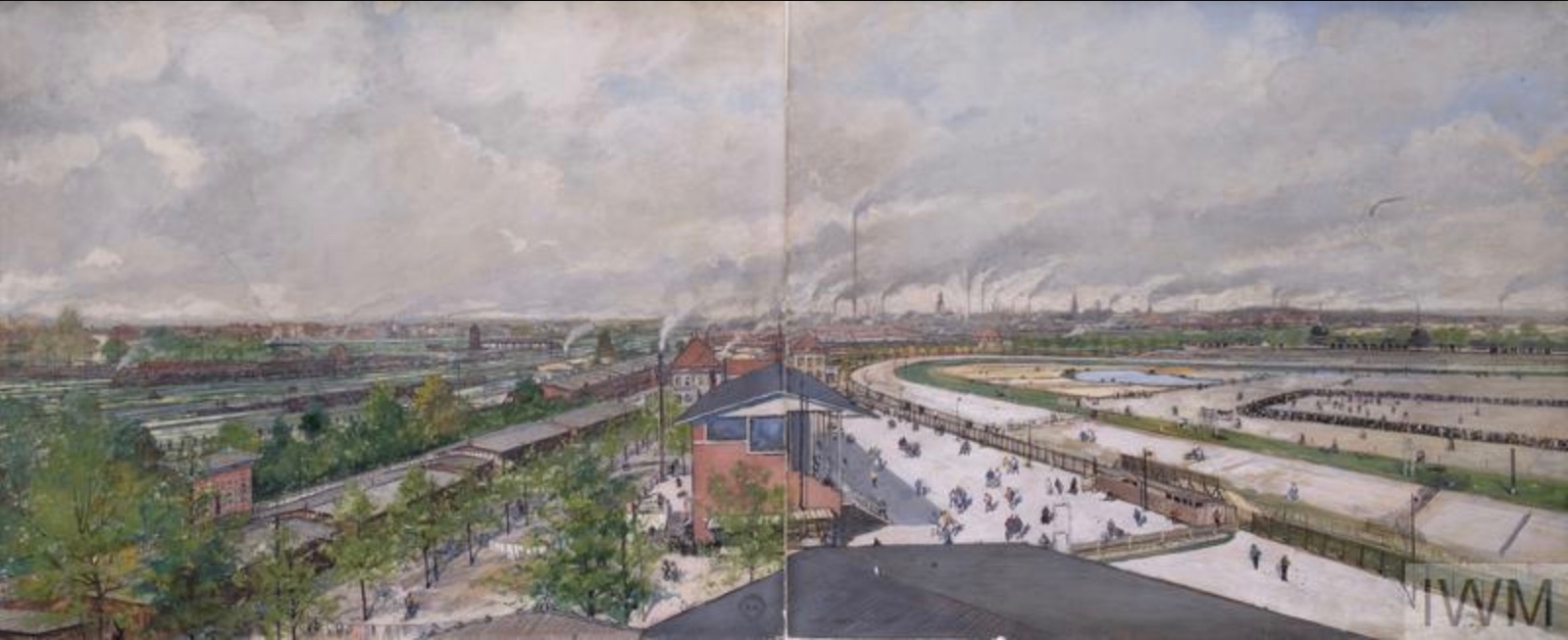
‘J. Hodgson
J. Hodgson was recorded as a member of the Ruhleben Lancastrian Society in the Manchester Guardian of January 15th 1915 (p.12). The article is entitled “Interned in Germany: Lancashire’s Civilian Prisoners: Full List of Those Detained at Ruhleben”. His address was recorded as c/o West and Co., 88 Old Kent Road, London, S.E.’
____________________
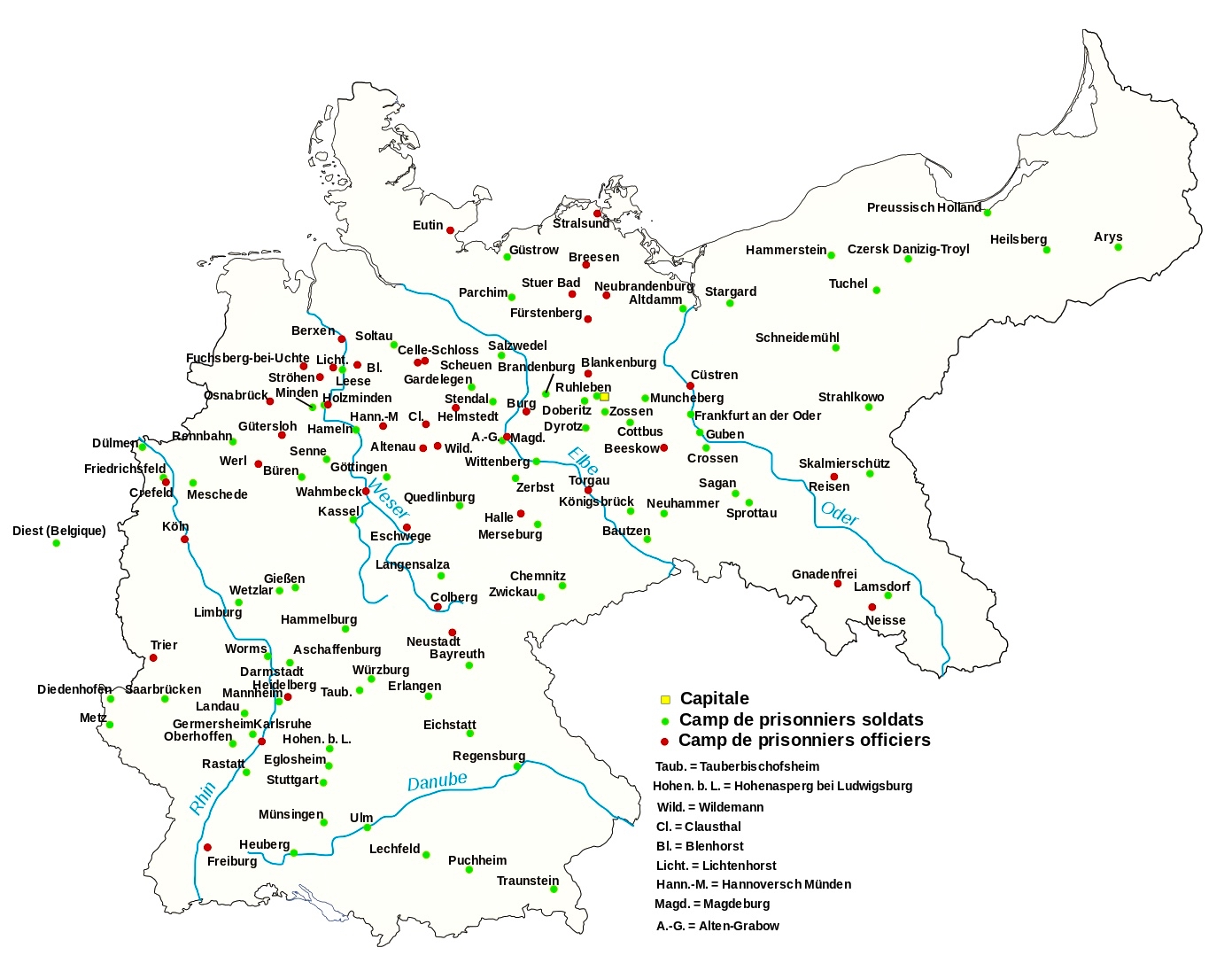
Red – OFFICERS CAMPS
GREEN – SOLDIERS
_______________
WX17615 THOMSETT, Ernest James ‘Ernie’ enlisted 11 November 1941 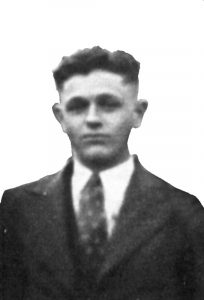 joined ‘E’ Coy as reinforcement. Was KIA 10 Feb 1942 Sungei Kranji-Sungei Defence Line aged 19 years. Ernie’s grandfather died 1918 as a POW in Germany of GSW and starvation. Please read further about James Westwood.
joined ‘E’ Coy as reinforcement. Was KIA 10 Feb 1942 Sungei Kranji-Sungei Defence Line aged 19 years. Ernie’s grandfather died 1918 as a POW in Germany of GSW and starvation. Please read further about James Westwood.
_______________________
‘The British War Office was extremely vague on how men should behave if they have the misfortune of falling into enemy hands, which meant there were no procedures or formal training that informed and reminded Australian troops about what the military authorities expected of them if they were captured and interrogated.
It was only after the 1916 Somme campaign and the news that some Australian prisoners had divulged sensitive operational information to the German Army that Australian troops were trained and routinely reminded of their obligations as prisoners. They were to say nothing more than their name and rank under interrogation, but a study of German intelligence documents shows that Australian prisoners continued to divulge operational information to the enemy.
They were captured with operational orders, photographs, personal diaries, and even spoke openly to their captors about the disposition of the Australian defences and life behind the lines. By virtue of their rank and experience, captured officers and non-commissioned officers (NCO) were targeted by German intelligence officers and examined more rigorously than Other ranks men.
Violence during interrogations was extremely rare; German intelligence officers employed far more productive techniques for lulling prisoners into a false sense of security such as polite conversation and offering cigars and cognac. Captured officers, particularly airmen, were usually held in designated “listening hotels” such as the Europäischer Hof hotel in Karlsruhe, where prisoner conversations about aircraft, units, and other operational matters were secretly recorded for intelligence purposes.
Turkish and German forces did not always provide proper medical treatment to wounded Australian prisoners. Both had a tendency to prioritise treating their own casualties after major actions, which meant that wounded prisoners often went days/months without medical treatment. Of the 397 Australians who died in captivity in the First World War, 288 died from wounds received in action – roughly the same survival rate as those who passed through Australian dressing stations and field hospitals.
The Privilege of Rank in Ottoman Turkey
The wounded could take up to six months recovering in a Turkish or German field hospital before being transported to a prison camp on the captor’s home front, but the journey for non-wounded prisoners could sometimes take longer. The 1907 Hague Convention recognised officers as members of the upper class and protected them from working as manual labourers to support their captor’s domestic economy. As such, they were transported to camps in either Germany or Turkey within days of capture, and the Australian Red Cross Society in London was notified of their whereabouts soon after.
Things were very different for Other ranks prisoners whose ability to work wholly defined their life in enemy hands. Whereas the Hague Convention protected officers from working, it allowed captors to use the labour of Other ranks prisoners as long as the work had no immediate connection with military operations.
Australians captured in Gallipoli and the Middle East were usually transported to Constantinople, then to Anatolia in Asia-Minor, where they worked on the construction of the Berlin-Baghdad Railway at the rail junction of Afion Kara Hissar. Most Australian prisoners were assigned to work parties in Taurus and Amanus mountains and spent up to twelve hours a day quarrying, drilling tunnels, felling timber, laying track, and blacksmithing Once the tunnel work was completed in 1917, most were moved east to Mosul or to Angora, then returned to Afion Kara Hissar after the British had pushed into Palestine in 1918.
Conditions varied according to the work parties and the front on which a prisoner was captured, but Other ranks men were often subjected to the same harsh living conditions and limited supplies as their Ottoman captors. Feeding and clothing prisoners in the far reaches of the Ottoman Empire proved woefully inadequate owing to the logistical problem of sending Red Cross parcels from London across Austria-Hungary, so many prisoners fell victim to sickness, hard labour and the prolonged effects of malnutrition.Of the seventy Australians who died in Turkish hands as prisoners, thirty-nine were Other ranks prisoners who died of disease.
By means of comparison, Australian officers were sent to Afion Kara Hissar where they were detained separately from Other ranks prisoners. They were treated much better, but faced food shortages, monetary inflation, and endless periods managing frustration and boredom. No Australian officers died in Turkish captivity.
German Reprisals on the Western Front in 1917
Imprisonment was somewhat different on the Western Front. In 1916, both officers and Other ranks prisoners were transported to Germany within days of capture, but Australians captured in 1917 remained in France for several months working behind German lines. Coinciding with the largest capture of Australian prisoners in a single action on the Western Front at Bullecourt in April, the German Army instigated a reprisal policy against the British and French armies for working German prisoners behind allied lines and within range of German guns.
All British and French prisoners of war captured during the reprisal period became “prisoners of respite” – they were to be worked hard, given little food, and would be housed in poor lodgings without so much as a blanket. It is not entirely clear what the German term “prisoners of respite” actually meant because the reprisal terms implied Allied prisoners captured in the spring of 1917 were in fact prisoners without respite. Whatever the misunderstanding, it is clear that the German Army was gambling with the health of the prisoners in an attempt to force the British to change their policy on the treatment of German prisoners. While German prisoners were employed behind Allied lines and the French had mistreated captive labour on the Verdun front in late 1916, the impetus of the reprisals was probably the German Army’s manpower shortage after heavy casualties in 1916 and the consequences of fighting a long war on multiple fronts.
Over 1,500 Other ranks Australians captured at Noreuil, Bullecourt and Lagnicourt in April 1917 were subjected to the reprisals that flagrantly disregarded the Hague Convention. After being captured, Australian prisoners were taken to Lille where they were locked in the casements of Fort MacDonald for ten days with little food or water, then returned to line areas to clear roads, dig trenches, bury bodies, and labour at engineering and ammunition dumps under British shellfire. Prisoners were encouraged to write to the War Office and the Australian High Commission in London about their treatment and condition, but were prevented from disclosing details about their whereabouts. The Australian Red Cross had been informed they were at a prison camp at Limburg and consequently dispatched thousands of food and clothing parcels to Germany. Without any welfare, conditions behind German lines were rough and violent. Hard labour and malnutrition made prisoners vulnerable to illness.[27] A number of Australians died of disease during the German reprisal period and at least seven were killed by Allied shellfire while working dangerously close to the front line.
Officers captured on the Western Front were spared the German reprisals in France. By January 1917, most British officers in Germany were concentrated in camps in the Rhineland as a reprisal against the Royal Flying Corps (RFC) bombing military targets in towns along the Rhine and Moselles rivers. Most Australian officers passed through the processing and distribution camp at Karlsruhe before proceeding to camps at Krefeld, Freiburg, Clausthal, Ströhen Moor, and Holzminden. As in Turkey, officers in German camps fared considerably well, even in the 10th Army Corps district near Hannover, where British officers were subjected to an organised system of coercion, strict discipline, and verbal abuse. Despite this, officers’ quarters in German camps were spacious; officers were permitted to have Other ranks prisoners cook and clean for them and many spent their days reading, studying, playing sports, gambling, and participating in camp theatres. Australian officers also drew pay at the same level as their corresponding rank in the German Army and could go on escorted walks outside the camp in return for parole.
Work and Escape in Germany
Once they were transported to Germany, Other ranks prisoners were employed to support Germany’s domestic needs. Since 1915, the German economy had struggled to cope with voids in essential home front industries, the British naval blockade, and the ever-growing demands of a war on multiple fronts. Millions of prisoners were assigned to work parties that supported the German domestic economy; they spent the rest of the war working on farms, in mines, forests, and factories. Many Australians worked in the Rhineland and East Prussia. Living conditions and treatment varied between work parties, but treatment could be harsh, violent and unforgiving. Only the sick and injured remained in the large “parent camps” for Other ranks prisoners where all mail and Red Cross food parcels were sent via the neutral countries. The barracks in these camps were sometimes overcrowded, filthy, and susceptible to outbreaks of disease. Strict wartime rationing in Germany made the food supplied by camp administrators limited in both quality and quantity. Nonetheless, Australian prisoners in contact with the Red Cross could afford to forego the German rations and subsist wholly on fortnightly food consignments from London. By 1918, they were among the best-fed people in Germany.
Despite the prominence and popularity of escape narratives in remembering the war behind the wire, few Australian prisoners of the First World War succeeded in their escape attempts. Of the 3,848 Australians taken prisoner by German forces, just forty-three escaped to neutral or friendly borders. Recent research on the subject shows that prisoners were not expected to escape in the First World War as they were in the Second World War. For Australians, only three officers managed to escape captivity – one from Turkish captivity and two from German captivity – with the remainder being Other ranks prisoners working close to the Dutch, Swiss, and Russian borders. It may not have been an officer’s duty to try to escape, but there were alternatives to sitting out the war inside a German prison camp. From 1916, Swiss medical commissioners examined the sick, the seriously wounded, and prisoners suffering from psychological conditions and determined whether they were eligible for internment in neutral Switzerland. By June 1917, all British officers and NCOs held captive in Germany for longer than eighteen months were eligible for internment in the Netherlands as a way of mitigating the psychological effects of prolonged incarceration.The scheme worked on the basis of order of capture; only about 200 Australians experienced internment in The Netherlands before war’s end in November 1918.
Conclusion: Repatriation, Historical Sources and the Australian Red Cross
In the days after their repatriation to Britain, more than 2,000 Australian prisoners from Germany and Turkey gave written statements about the circumstances of their capture and treatment in captivity. Some men gave harrowing accounts of their poor treatment, while others told their examiners that they fared quite well. Imprisonment in Turkey was radically different to captivity in Germany, but officers in both theatres benefited from the privilege of rank and coped better than the Other ranks prisoners. These statements are now held at the Australian War Memorial, where they are available to researchers studying Australians in captivity in the First World War (record series AWM30). This series does not, however, cover the at times problematic reintegration of prisoners of war back into the AIF and civilian life in the decades after the war.
After a mandatory four-week furlough, those who endured captivity were demobilised and discharged without any consideration of the physical or psychological consequences of prolonged incarceration. Despite this, one of the most consistent themes to emerge from such a large body of archival material was the value of the Australian Red Cross Society’s assistance. Volunteers from the two branches of the Australian Red Cross worked tirelessly in support of prisoners of war and their families on the home front: the Wounded and Missing Bureau managed by Vera Deakin (1891-1978); and the Prisoner of War Department under Mary Elizabeth Chomley (1872-1960). Through their efforts in confirming that a man had been captured and then regularly sending him food and clothing parcels for the duration of the war, these women and their staff helped to relieve the anxieties of imprisonment and ensured that Australian prisoners had a much greater chance of survival.’
Aaron Pegram, Australian War Memorial
Section Editor: Peter Stanley
copied from https://encyclopedia.1914-1918-online.net/article/prisoners_of_war_australia
_________________
